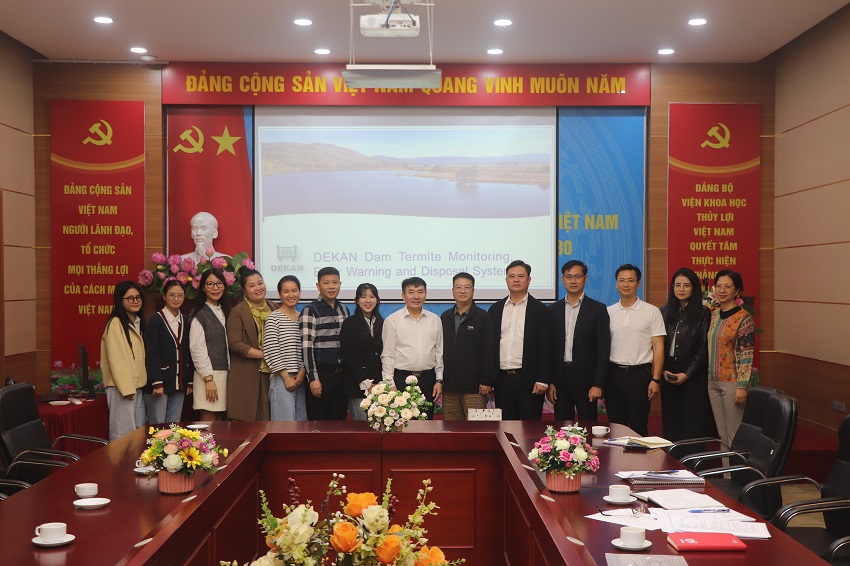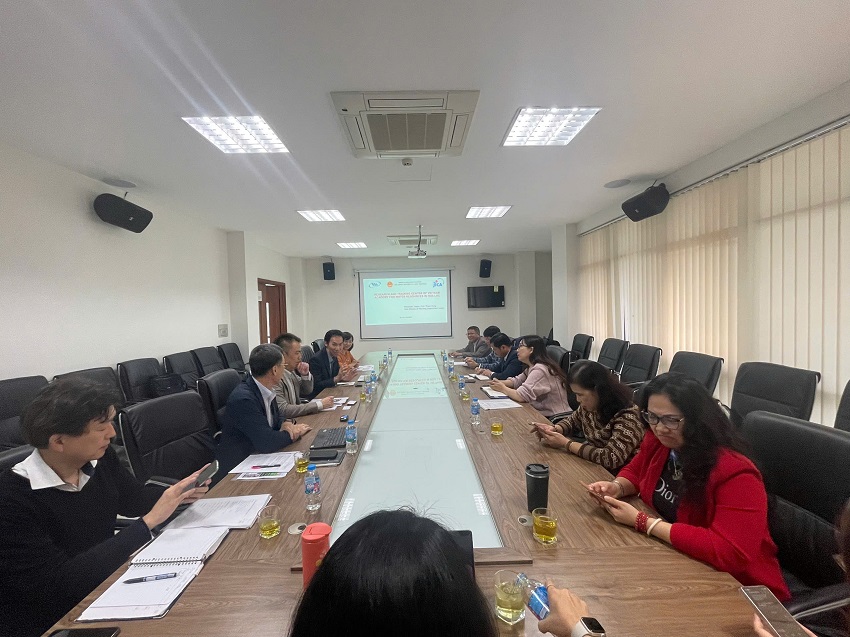Mô hình nhiệt động lực học và ứng dụng trong nghiên cứu sử dụng các chất kết dính vô cơ
09/03/2022Mô hình nhiệt động lực học là cần thiết cho việc nghiên cứu về các phản ứng hóa học. Với ba biến số ảnh hưởng chủ yếu nhất là nhiệt độ, áp suất và thành phần hóa học, chúng ta có thể dự đoán nếu phản ứng sẽ diễn ra và trạng thái cuối cùng sau khi phản ứng kết thúc. Các định luật tổng quát điều chỉnh nhiệt động lực học đã được biết đến từ lâu và lần đầu tiên được áp dụng cho hóa học xi măng vào cuối thế kỷ 19 của Le Chatelier để chứng minh rằng quá trình hydrat hóa xi măng thu được thông qua sự hòa tan của clinke ban đầu dẫn đến một pha nước luôn bão hòa đối với các phản ứng hydrat hóa từ đó dẫn đến sự kết tủa của các pha rắn. Mô hình nhiệt động học được phát triển và ứng dụng bởi các nhà địa hóa học nhằm tính toán hệ phương trình phản ứng phức tạp của hệ đa chất thường xảy ra trong tự nhiên có sử dụng vật liệu xi măng như hỗn hợp vật liệu gia cố đất, tương tác bê tông/đất, ăn mòn bê tông, thủy hóa xi măng, xử lý chất thải phóng xạ. Do đó các lý thuyêt cơ bản của mô hình nhiệt động học và các ứng dụng của mô hình nhiệt động sẽ được trình bày trong bài báo này.
1. ĐẶT VẤN ĐỀ*
2. NGUYÊN LÝ CƠ BẢN CỦA MÔ HÌNH NHIỆT ĐỘNG LỰC HỌC
2.1. Độ hoạt động và lực ion
2.2. Cân bằng nhiệt động học
3. ỨNG DỤNG CỦA MÔ HÌNH NHIỆT ĐỘNG LỰC HỌC
3.1. Nghiên cứu thủy hóa xi măng
3.2. Nghiên cứu độ bền bê tông trong xử lý chất thải hạt nhân
4. NGHIÊN CỨU THIẾT KẾ CẤP PHỐI ĐẤT CÓ SỬ DỤNG PUZZOLAN TỰ NHIÊN, XI MĂNG VÀ VÔI
5. KẾT LUẬN
TÀI LIỆU THAM KHẢO
[1] B. Lothenbach, D. Damidot, T. Matschei, and J. Marchand, “Thermodynamic modelling: State of knowledge and challenges,” Adv. Cem. Res., vol. 22, pp. 211–223, Jan. 2010.
[2] L. Trotignon, V. Devallois, H. Peycelon, C. Tiffreau, and X. Bourbon, “Predicting the long term durability of concrete engineered barriers in a geological repository for radioactive waste,” Phys. Chem. Earth, vol. 32, pp. 259–274, 2007.
[3] N. C. M. Marty, C. Tournassat, A. Burnol, E. Giffaut, and E. C. Gaucher, “Influence of reaction kinetics and mesh refinement on the numerical modelling of concrete/clay interactions,” J. Hydrol., vol. 364, no. 1–2, pp. 58–72, 2009.
[4] T. J. Tambach, M. Koenen, L. J. Wasch, and F. van Bergen, “Geochemical evaluation of CO2injection and containment in a depleted gas field,” Int. J. Greenh. Gas Control, vol.32, pp. 61–80, 2015.
[5] S. Waldmann and H. Rütters, “Geochemical effects of SO2during CO2storage in deep saline reservoir sandstones of Permian age (Rotliegend) - A modeling approach,” Int. J.Greenh. Gas Control, vol. 46, pp. 116–135, 2016.
[6] G. Bourrié, F. Trolard, J. M. R. G. Jaffrezic, V. Maître, and M. Abdelmoula, “Iron control by equilibria between hydroxy-Green Rusts and solutions in hydromorphic soils,” Geochim. Cosmochim. Acta, vol. 63, no. 19, pp. 3417–3427, 1999.
[7] L. Liang, A. B. Sullivan, O. R. West, G. R. Moline, W. Kamolpornwijit, and C. Cf, “Reactive Barriers,” Environ. Eng. Sci., vol. 20, no. 6, 2003.
[8] H. C. Helgeson, D. H. Kirkham, and G. C. Flowers, “Theoretical prediction of the thermodynamic behavior of aqueous electrolytes at high pressures and temperatures: IV. Calculation of activity coefficients, osmotic coefficients, and apparent molal and standard and relative partial molal properties to 600oC,” Am. J. Sci., 1981.
[9] B. Lothenbach, G. Le Saout, E. Gallucci, and K. Scrivener, “Influence of limestone on the hydration of Portland cements,” Cem. Concr. Res., vol. 38, no. 6, pp. 848–860, 2008.
[10] H.-J. Kuzel and H. Pöllmann, “Hydration of C3A in the presence of Ca(OH)2, CaSO4·2H2O and CaCO3,” Cem. Concr. Res., vol. 21, no. 5, pp. 885–895, 1991.
[11] T. Matschei, B. Lothenbach, and F. P. Glasser, “Thermodynamic properties of Portland cement hydrates in the system CaO–Al2O3–SiO2–CaSO4–CaCO3–H2O,” Cem. Concr. Res., vol. 37, no. 10, pp. 1379–1410, 2007.
[12] K. De Weerdt, M. Ben Haha, G. Le Saout, K. Kjellsen, H. Justnes, and B. Lothenbach, “Hydration Mechanisms of Ternary Portland Cements Containing Limestone Powder and Fly Ash,” Cem. Concr. Res., vol. 41, pp. 279–291, Mar. 2011.
[13] B. Lothenbach and F. Winnefeld, “Thermodynamic modelling of the hydration of Portland cement,” Cem. Concr. Res., vol. 36, pp. 209–226, 2006.
[14] B. Lothenbach, T. Matschei, G. Möschner, and F. P. Glasser, “Thermodynamic modelling of the effect of temperature on the hydration and porosity of Portland cement,” Cem. Concr. Res., vol. 38, no. 1, pp. 1–18, 2008.
[15] B. Lothenbach, K. Scrivener, and R. D. Hooton, “Supplementary cementitious materials,” Cem. Concr. Res., vol. 41, no. 12, pp. 1244–1256, 2011.
[16] C. Yang, J. Samper, and L. Montenegro, “A coupled non-isothermal reactive transport model for long-term geochemical evolution of a HLW repository in clay,” Environ. Geol., vol. 53, pp. 1627–1638, Feb. 2008.
[17] A. Mon, J. Samper, L. Montenegro, A. Naves, and J. Fernández, “Long-term nonisothermal reactive transport model of compacted bentonite, concrete and corrosion products in a HLW repository in clay,” J. Contam. Hydrol., vol. 197, pp. 1–16, 2017.
[18] H. N. Nguyen, V. Q. Tran, A. Q. Ngo, and C. T. Ngo, “Application of thermodynamic model to mix design of stabilized soils,” Int. J. Eng. Adv. Technol., vol. 8, no. 4, pp. 1295–1300, 2019.
[19] A. A. Amer, T. M. El-Sokkary, and N. I. Abdullah, “Thermal durability of OPC pastes admixed with nano iron oxide,” HBRC J., vol. 11, no. 2, pp. 299–305, 2015.
_________________________________________________________________________________________________
Chi tiết bài báo xem tại đây: Mô hình nhiệt động lực học và ứng dụng trong nghiên cứu sử dụng các chất kết dính vô cơ
Nguyễn Hữu Năm
Viện Thuỷ điện và Năng lượng tái tạo
TẠP CHÍ KH&CN THỦY LỢI
Ý kiến góp ý:













